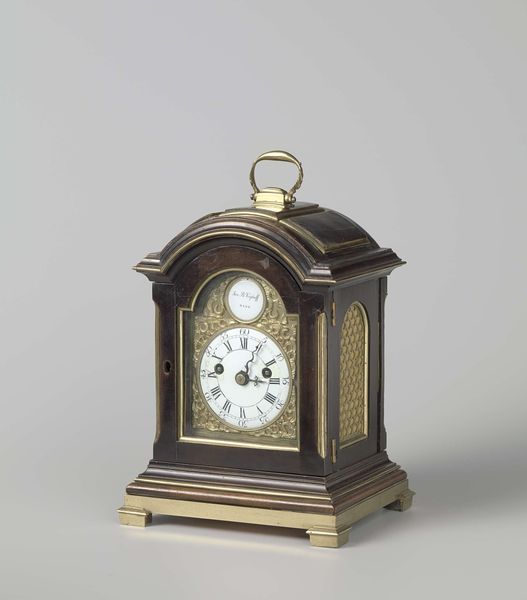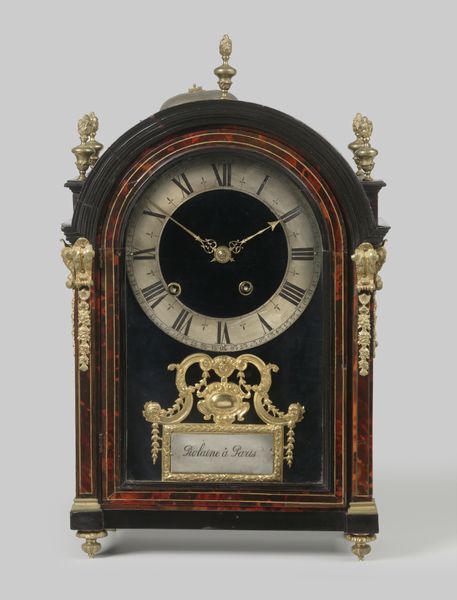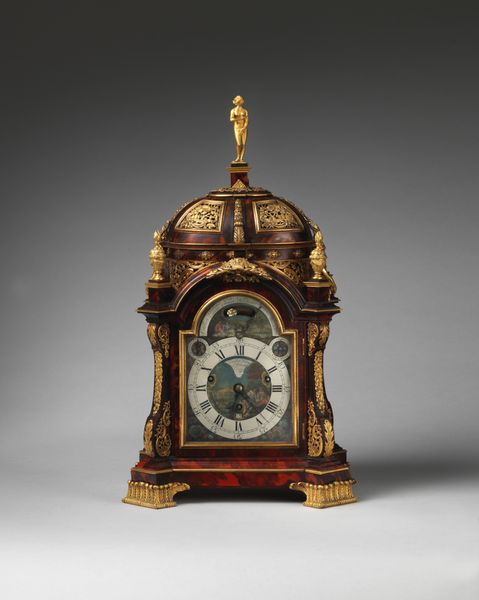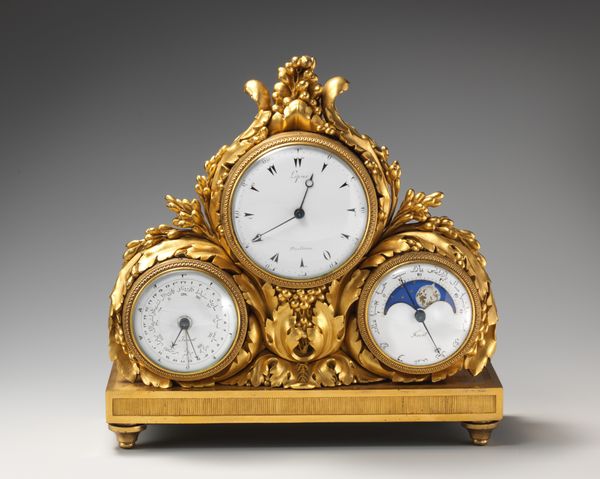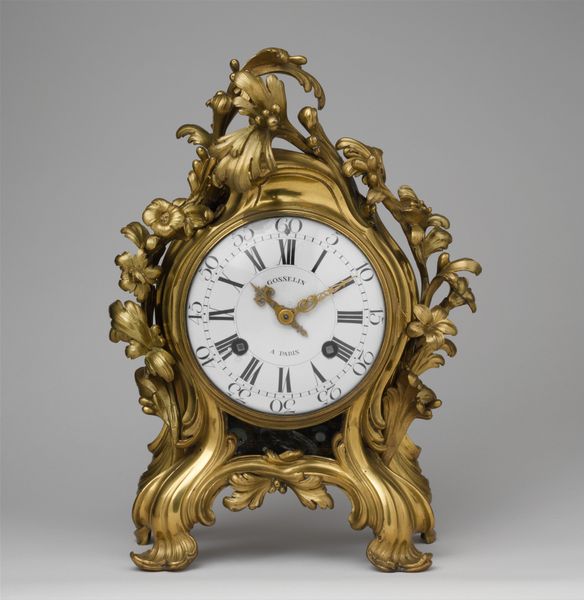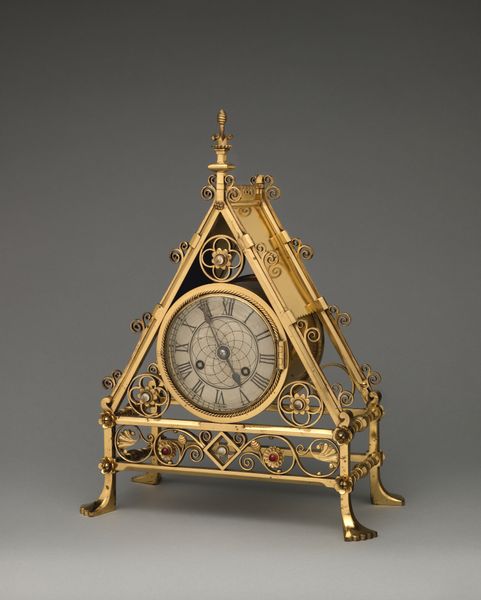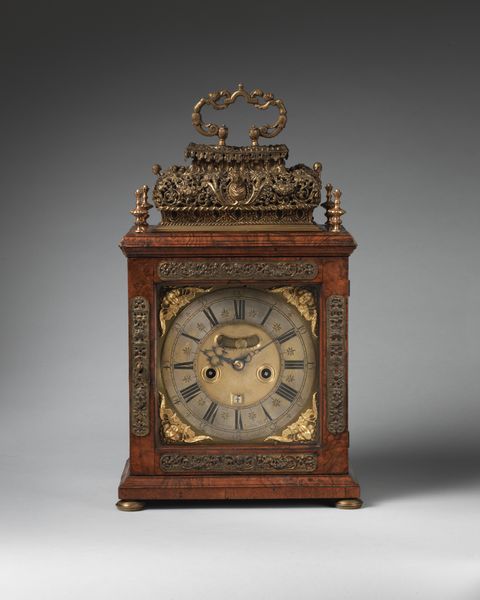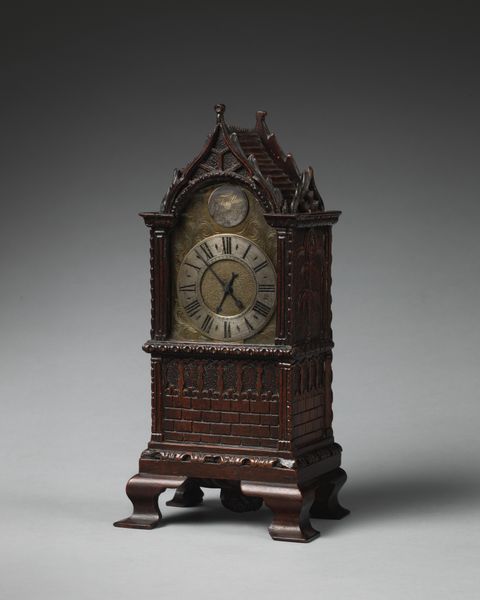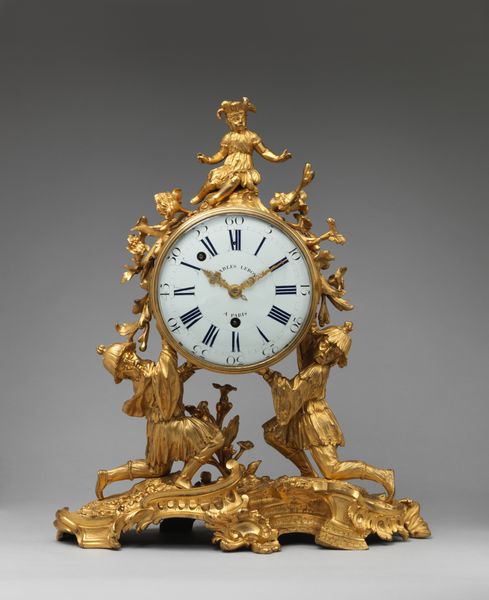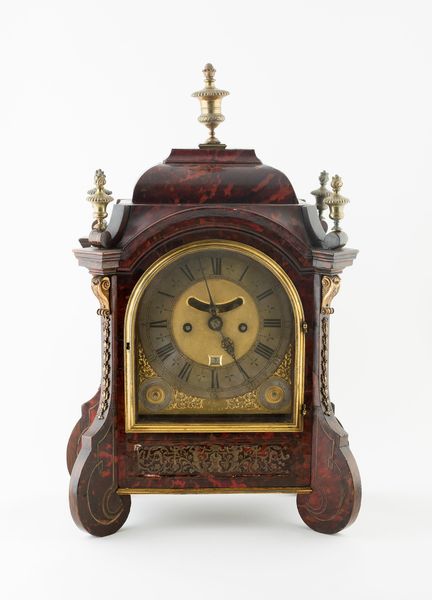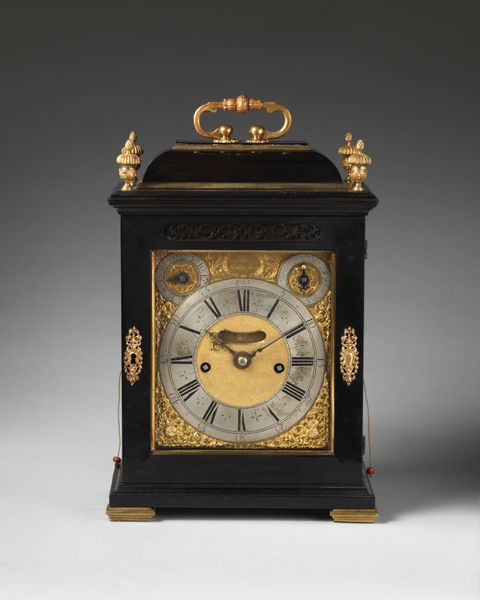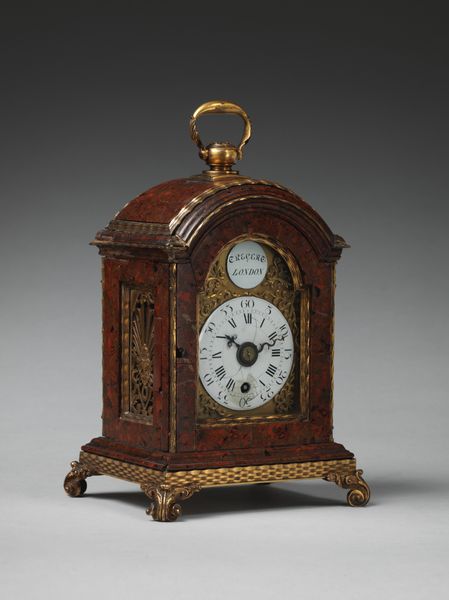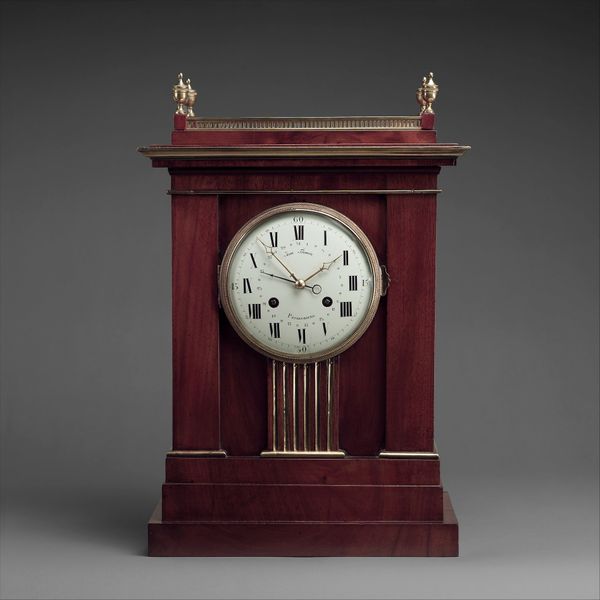
Dimensions: clock: 12 3/4 × 9 × 5 3/4 in. (32.4 × 22.9 × 14.6 cm); case: 14 1/2 × 11 × 7 in. (36.8 × 27.9 × 17.8 cm)
Copyright: Public Domain
Curator: Here we have a table or bracket clock created between 1770 and 1780, now residing at the Metropolitan Museum of Art. It's attributed to Christopher Pinchbeck II, showcasing his craftsmanship in metal and wood. Editor: My first impression is how wonderfully opulent this object is. It immediately strikes me as a powerful symbol of wealth and status. All of that bright gilding really catches the eye, doesn’t it? Curator: Absolutely. The materials alone would have been costly. Looking closer, the Rococo influence is unmistakable. These objects signaled taste, knowledge, and connection to fashionable elite circles. Notice the casework itself—an expertly made miniature architectural object, designed to showcase elaborate mechanics. Editor: The cherubic figures at the clock's face suggest themes beyond mere timekeeping. Are they indicators of earthly and heavenly time or perhaps symbols representing family, status or posterity? Time itself had tremendous cultural symbolism at this moment. Curator: It's more complex than simply telling time. Remember that clocks of this era were significant social markers, visible in the homes of those who shaped political and economic events. Owning such an elaborate timepiece declared a certain position in society and allegiance to a refined culture, a status marker. The mechanics themselves often involved political debates of science and industry. Editor: The case also reminds us that domestic spaces were carefully crafted stages for performing status. This object was surely meant to be seen, admired, and to serve as a silent testament to its owner's position. It feels very intentional. It even has its own portable shelter. Curator: Precisely! Pinchbeck capitalized on these demands with pieces blending artistry and function. His clocks entered specific settings and supported ongoing stories of political, social, and economic authority. They became both tools and treasures. Editor: When you view it through that socio-historical lens, it casts an intricate symbolic shadow on society. Time wasn't just a measure, but also a mirror reflecting personal and collective ambitions. It still sparks reflection on how much has changed – and what surprisingly remains. Curator: Indeed. Reflecting on this artwork reveals both the ambitions of an era and the fascinating power of objects within it.
Comments
No comments
Be the first to comment and join the conversation on the ultimate creative platform.
